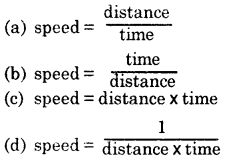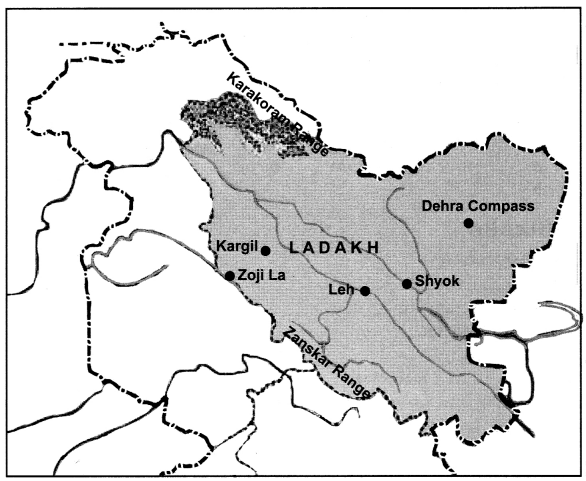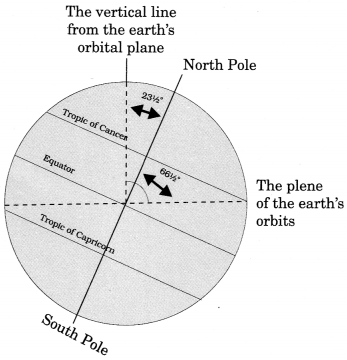MCQ Questions for Class 7 Science Chapter 13 Motion and Time
Students are advised to practice the NCERT MCQ Questions for Class 7 Science Chapter 13 Motion and Time with Answers Pdf free download is available here. MCQ Questions for Class 7 Science with Answers are prepared as per the Latest Exam Pattern. Students can solve these Motion and Time Class 7 MCQs Questions with Answers and assess their preparation level.
Motion and Time Class 7 MCQs Questions with Answers
Solving the Motion and Time Multiple Choice Questions of Class 7 Science Chapter 13 MCQ can be of extreme help as you will be aware of all the concepts. These MCQ Questions on Motion and Time Class 7 with answers pave for a quick revision of the Chapter thereby helping you to enhance subject knowledge. Have a glance at the MCQ of Chapter 13 Science Class 7 and cross-check your answers during preparation.
Question 1.
The speed of a car is 40 km/h. What is time taken to reach from one city to another city if the distance between the two cities is 480 km:
(a) 10 hours
(b) 11 hours
(c) 14 hours
(d) 12 hours
Answer
(d) 12 hours
The time is taken by a car is 12 hours.
Question 2.
72 km/h m/s:
(a) 72 m/s
(b) 20 m/s
(c) 36 m/s
(d) 12 m/s
Answer
(b) 20 m/s
72 km/h – 20m/s
Question 3.
The standard unit of time is:
(a) hour
(b) minute
(c) second
(d) all of these
Answer
(c) second
The standard unit of time is second.
Question 4.
The clock used now a days are:
(a) quartz
(b) minute
(c) second
(d) all of these
Answer
(a) quartz
The quartz clock is used now-a-days.
Question 5.
When weight of bob in a pendulum is increased then the oscillation period of a pendulum is:
(a) increased
(b) decreased
(c) no change
(d) can’t say
Answer
(b) decreased
When weight of bob in pendulum is increased, the oscillation period of pendulum is decreased.
Question 6.
The standard unit of length is:
(a) metre (‘m’)
(b) kilometre
(c) m/s
(d) km/h
Answer
(a) metre (‘m’)
The standard unit of length is meter (‘m’).
Question 7.
The standard unit of mass is:
(a) ‘kg’
(b) mg
(c) g
(d) none of these
Answer
(a) ‘kg’
(‘Kg’) is the unit of mass.
Question 8.
The standard unit of temperature is:
(a) ‘Kg’
(b) F
(c) °C
(d) can’t say
Answer
(a) ‘Kg’
(‘K’) is the unit of temperature.
Question 9.
Distance:
(a) D = S x T
(b) D = \(\frac { T }{ s }\)
(c) D = \(\frac { s }{ T }\)
(d) D = \(\frac { 1 }{ T\times S }\)
Answer
(a) D = S x T
D = S x T
Question 10.
Time:
(a) t = d x s
(b) t = \(\frac { s }{ d }\)
(c) t = \(\frac { d}{ s }\)
(d) t = \(\frac { 1 }{ s\times d }\)
Answer
(c) t = \(\frac { d}{ s }\)
t = \(\frac { d}{ s }\)
Question 11.
The distance moved by the object in a unit time is:
(a) time
(b) distance
(c) speed
(d) can’t say
Answer
(c) speed
The distance moved by the object in a unit time is speed.
Question 12.
The pictorial representation of two variables inter dependent of one another is known as:
(a) motion
(b) graph
(c) speed
(d) time
Answer
(b) graph
Graph is pictorial representation of two objects.
Question 13.
If an object covers equal distance in equal intervals of time, then the object is said to have:
(a) non-uniform motion
(b) uniform motion
(c) oscillation
(d) none of these
Answer
(b) uniform motion
A staight line covers equal distance in equal intervals of time is uniform motion.
Question 14.
A device used to measure the speed of vehicles is:
(a) odometer
(b) graph
(c) speedometer
(d) none of these
Answer
(c) speedometer
Speedometer measure the speed of vehicles.
Question 15.
The to and fro motion of the particle about its mean position is called:
(a) intervals
(b) vibration
(c) pendulum
(d) can’t say
Answer
(b) vibration
To and fro motion is vibration.
Question 16.
The most common example of periodic motion or oscillatory motion is:
(a) interval
(b) pendulum
(c) simple pendulum
(d) speedometer
Answer
(c) simple pendulum
Simple pendulum is periodic or oscillatory motion.
Question 17.
The time interval between one sunrise and next sunrise is called a:
(a) year
(b) month
(c) day
(d) week
Answer
(c) day
The time interval between one sunrise to next sunrise is a day.
Question 18.
Which of the following motion is circular motion:
(a) motion of a child over see saw
(b) motion of a car running on a straight road
(c) motion of an electric bell hammer
(d) motion of a child in a merry go round
Answer
(d) motion of a child in a merry go round
A child in a merry-go-round is circular motion.
Question 19.
A simple pendulum takes 32 S complete 20 oscillations. What is the time period of pendulum:
(a) 640
(b) 0.625
(c) 1.60
(d) none of these
Answer
(b) 0.625
The time period of pendulum is 0.625.
Question 20.
Distance between two cities is measured in:
(a) metres
(b) kilometres
(c) second
(d) kilogram
Answer
(b) kilometres
Distance between two cities is measrued by kilometers.
Question 21.
Motion of a train on a straight
(a) oscillatory motion
(b) circular motion
(c) uniform motion
(d) straight line motion
Answer
(d) straight line motion
A train on a straight bridge is straight line motion.
Question 22.
A device used to measure the distance moved by a vehicle:
(a) odometer
(b) speedometer
(c) both
(d) none of these
Answer
(a) odometer
An odometer measured the distance moved by a vehicle.
Question 23.
The time taken by the earth to make one revolution around the sun is called a:
(a) day
(b) week
(c) month
(d) year
Answer
(d) year
The earth make one revolution around the sun in a year.
Question 24.
The motion of a vibrating particle from one extreme position to another extreme position about its mean position is:
(a) speed
(b) circulation
(c) oscillation
(d) none of these
Answer
(c) oscillation
The motion of vibrating particle is circulation.
Question 25.
The time taken by a vibrating body to complete one vibration is:
(a) speed
(b) time of period
(c) distance
(d) all of these
Answer
(b) time of period
The time taken by a vibrating body to complete one vibration is time period.
Question 26.
A horse pulling a cart has:
(a) oscillatory motion
(b) circular motion
(c) linear motion
(d) none of these
Answer
(a) oscillatory motion
A horse pulling a cart has oscillatory motions.
Question 27.
If the speed of a body moving in a straight line changes then the speed of the body is:
(a) uniform
(b) non-uniform
(c) some times uniform and non-uniform
(d) none of these
Answer
(b) non-uniform
If the speed of a body moving in a straight line changes then the speed of the body is non-uniform.
Question 28.
An earth completes one revolution around the sun in:
(a) 1 day
(b) 1 year
(c) 1 hour
(d) none of these
Answer
(b) 1 year
An earth complete one revolution around the sun in a year.
Question 29.
A simple pendulum is an example of:
(a) periodic motion
(b) circular motion
(c) linear motion
(d) none of these
Answer
(a) periodic motion
Periodic motion is an example of a simple pendulum.
Question 30.
An odometer is used to measure:
(a) speed
(b) distance
(c) motion
(d) none of these
Answer
(b) distance
Distance is measured by an odometer.
Question 31.
The hammer of an electric bell has motion:
(a) circular motion
(b) vibratory motion
(c) linear motion
(d) periodic motion
Answer
(b) vibratory motion
The hammer of an electric bell has vibratory motion.
Question 32.
The unit of speed of train is:
(a) meter per hour
(b) meter per second
(c) kilometer per hour
(d) mile per second
Answer
(c) kilometer per hour
The unit of speed of train is kilometer per hour.
Question 33.
The times taken by a pendulum to complete one oscillation is:
(a) oscillation period
(b) 1 second
(c) time period
(d) frequency
Answer
(c) time period
The time taken by a pendulum to complete one oscillation is time period.
Question 34.
The correct relation for speed is:

Answer
![]()
![]()
Question 35.
The speed of a train is 60 km/h. The distance covered by the train is 4 hours would be:
(a) 15 km
(b) 240 km
(c) \(\frac { 1 }{ 15 }\) km
(d) none of these
Answer
(b) 240 km
The distance covered by a train would be 240 km.
Question 36.
Classify the following as motions is oscillatory motion:
(a) motion of your hands while runnning
(b) motion of a horse pulling a cart on a straight road
(c) motion of a child in a merry go round
(d) motion of a train on a straight line
Answer
(a) motion of your hands while runnning
Motion your hands while running is oscillatory motion.
Question 37.
Which of the following is correct statements:
(a) the basic unit of time is second
(b) every object moves with a constant speed
(c) distance between two cities is measured in metres
(d) the time period of a given pendulum is not constant
Answer
(a) the basic unit of time is second
The basic unit of time is second.
Question 38.
The graph between distance, time for a body at rest is a:
(a) straight line parallel to a distance axis
(b) straight line parallel to time axis
(c) curve line
(d) straight line
Answer
(b) straight line parallel to time axis
Straight line parallel to time axis.
Question 39.
A car covers a distance of 220 km in 4 hours what is its speed:
(a) 50 km/h
(b) 55 km/h
(c) 224 km/h
(d) 880 km/h
Answer
(b) 55 km/h
The speed of a car is 55 km/h.
Question 40.
The graph between distance and time for a non uniform motion is a:
(a) curve line
(b) can’t say
(c) straight line
(d) none of these
Answer
(a) curve line
The graph between distance and time is curve line for non¬uniform motion.
Question 41.
A car covers 40 km in first hour, 115 km in next two hours and 45 km in next one hours. Find out its averages speed:
(a) 100 km/h
(b) 66.6 km/h
(c) 50 km/h
(d) none of these
Answer
(c) 50 km/h
The total averages speed of a car is 50 km/h.
Question 42.
The S.I. unit of speed is:
(a) m/s
(b) km/min
(c) km/h
(d) km/s
Answer
(a) m/s
The S.I. unit of speed is m/s.
Match the column A with column B:
Question 1.
| Column-A | Column-B |
| (a) Merry go round | (i) straight line |
| (b) Over see-saw | (ii) circular motion |
| (c) Your hands while running | (iii) linear motion |
| (d) Train on a straight line | (iv) oscillatory motion |
| (e) Horse pulling a cart | (v) oscillatory motion |
Answer
| Column-A | Column-B |
| (a) Merry go round | (ii) circular motion |
| (b) Over see-saw | (iv) oscillatory motion |
| (c) Your hands while running | (v) oscillatory motion |
| (d) Train on a straight line | (i) straight line |
| (e) Horse pulling a cart | (iii) linear motion |
Question 2.
| Column-A | Column-B |
| (a) 365 days | (i) 1 millennium = 1000 years |
| (b) 10 years | (ii) 1 century = 100 years |
| (c) 10 decades | (iii) 1 decade |
| (d) 10 centuries | (iv) 1 year |
Answer
| Column-A | Column-B |
| (a) 365 days | (iv) 1 year |
| (b) 10 years | (iii) 1 decade |
| (c) 10 decades | (ii) 1 century = 100 years |
| (d) 10 centuries | (i) 1 millennium = 1000 years |
State the following statements are True or False:
Question 1.
The basic unit of time is second.
Answer
True
Question 2.
Every object moves with a constant speed.
Answer
False
Question 3.
The time period of a given pendulum is not constant.
Answer
True
Question 4.
The speed of a train is expressed in m/h.
Answer
False
Question 5.
Distance between two cities is measrued in kilometers.
Answer
True
Question 6.
Motion of your hands while running is oscillatory motion.
Answer
True
Question 7.
A simple pedulum is an example of linear motion.
Answer
False
Question 8.
A speedometer is used to measure distance.
Answer
False
Question 9.
Minute is the basic unit of time.
Answer
False
Question 10.
Second is the larger unit of time.
Answer
False
Question 11.
Working of clock depends on periodic motion.
Answer
True
Question 12.
When an object covers equal distances in equal intervals of time, however small be the intervals, then we say that it is in uniform motion.
Answer
True
Fill in the blanks:
Question 1.
The motion of vehicles on a straight road is in …………………
Answer
straight line
Question 2.
Revolving of earth around the sun is ………………… motion.
Answer
uniform motion
Question 3.
Running athlete is the example of ………………… motion.
Answer
non-uniform motion
Question 4.
The weight should swing freely on being moved some distance to one side and released is …………………
Answer
oscillation
Question 5.
The time taken by a pendulum to complete an oscillation is called the period of …………………
Answer
oscillation
Question 6.
On increasing the length of the pendulum the oscillation period also …………………
Answer
increases
Question 7.
………………… measures the distance moved by vehicle.
Answer
odometer
Question 8.
………………… records speed directly in km/h.
Answer
speedometer
Question 9.
A horse pulling a cart has …………………
Answer
linear motions
Question 10.
………………… is metallic ball of a pendulum.
Answer
Bob of pendulum
Question 11.
The basic unit of speed is …………………
Answer
m/s
Question 12.
Speed = …………………
Answer
distance lime
Hope the information shared regarding the NCERT MCQ Questions for Class 7 Science Chapter 13 Motion and Time with Answers Pdf free download is true and genuine as far as our knowledge is concerned. If you feel any information regarding CBSE Class 7 Science Motion and Time MCQs Multiple Choice Questions with Answers is missing do reach us and we will look into it and add it accordingly.
MCQ Questions for Class 7 Science Chapter 13 Motion and Time Read More »




